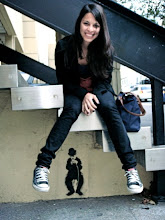127 Hours explores and portraits our
generation’s habitual ritual to embalm and encapsulate our lives in photographs
and videos. There is a shared frantic need to record every important moment we
experience as to avoid loosing them in the abysms of memory. In 127 Hours, the characters’ first
reaction to exciting and memorable experiences is to take their cameras out. “I
can’t believe we just did that… a camera, a camera,” Aron, Kristi, and Megan euphorically
yield after jumping in the secret pool. In addition, it is goes unsaid that
such videos and pictures will end up on facebook in the matter of hours. If
these pictures are not shared with a broad online community, it is as if they
had never happened. Along the same lines, such concept supports the making of
this semi-documentary film. It reenacts a crucial moment in the life of Aron
which, to be truly relevant, had to be shared in a big screen with audiences
around the world. No wonder he thinks this is the “best film ever made”
(Barkham).
Cameras
take another important role in this film. They embody a silent psychologist
seating across the room, thus becoming the vehicle for self-reflection and
auto-analysis. “Is it true that despite, or maybe because you’re a big fucking
heart hero, you didn’t tell anyone where you were going? Oh, yeah, that’s
absolutely correct.” Aron arrives to the core of his actions driven by his
subconscious, which is something that in therapy usually takes a long time to decipher.
In addition, talking to the camera helped him reflect about the state and
meaning of his relationships with family, friends, girlfriends, and coworkers.
Finally,
the scene that everyone talks about is the gory sequence when he finally chops
off his arm. Let’s first point out that such a scene would not have been so
effective if he had taken his Swiss knife with him. “Lesson: Don't buy the
cheap, made-in-China multi-tool.” This sharp observation or lesson plays out
the common stereotypes of the low quality associated with every ‘made-in-China’
object. Nevertheless, this low-quality knife was ideal for Boyle to create a
long and tiring sequence full of blood. I had heard the urban legends around 127 Hours about people in the audience fainting
and vomiting by watching this part of the film. It seemed completely absurd,
specially because audiences have been accustomed to lots of gory in the screen
for example, with the chopping of a leg in Saw, or the continuous splashes of
blood in Tarantino’s movies. The truth is that Boyle used the sound to create
physical pain in the audience, thus making the gory of the scene much more
acute than it would otherwise be. A very high pitch is synchronized with the cutting
of a nerve, thus making the audience squirm in their seats. I would be curious
to see this scene in mute, I am sure it would not be near as bad as it is with
the music.

